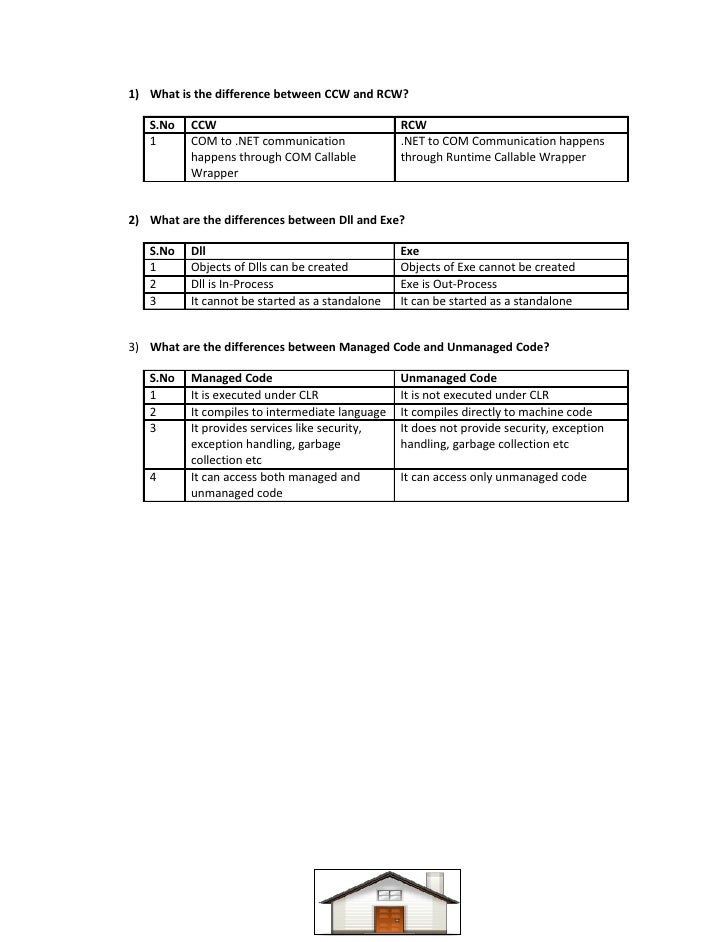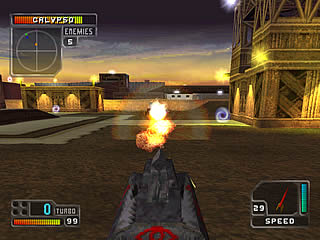Difference Between Dll And Exe In Dot Net
DLL: 1)it has versioning 2)it is not self executable 3)it runs in application process memory 4)it has no entry point 5)it is reusable 6)Out Process Server Exe: 1)it is self executable 2)it has no versioning 3)it runs in own memory 4)it have main function(Entry point) 5)it is self executable 6) In Process Server. A) In shortcut.exe is an executable file & DLL (Dynamic Link Library) is not an executable file. B) DLL is an in-process server while exe is a out-process server it means DLL works within the thread of application, while exe works after creating its own thread. C) If DLL fails the application became fail if exe fails DLL doesn't fail because it's not work within the thread of application but the part of the exe could not work properly. D) An EXE is visible to the system as a regular Win32 executable. Its entry point refers to a small loader, which initializes the.NET runtime and tells it to load and execute the assembly contained in the EXE. A DLL is visible to the system as a Win32 DLL but most likely without any entry points.
The.NET runtime stores information about the contained assembly in its own header.
A Windows DLL contains library code to be used by any program running on Windows. A DLL may contain either structured or object oriented libraries. COM (Component Object Model) is the component model based on the object oriented design, which means that the components represented by the COM component exists in the form of classes and objects implementing a standard specification defined by COM. COM components can be used by any program running on Windows Operating System; be it is written with VB, C, Java or even some.NET compliant language like C# and VB.NET. Dot NET assembly is the component standard specified by the.NET. Hence, dot net assemblies are understandable to only Microsoft.NET and can be used only in.NET managed applications.


Jul 21, 2010 Hi All, What is a difference between a regular DLL &.net DLL? Thanks in adavnce.

A dynamic-link library (DLL) is an executable file that acts as a shared library of functions. Dynamic linking provides a way for a process to call a function that is not part of its executable code. The executable code for the function is located in a DLL, which contains one or more functions that are compiled, linked, and stored separately from the processes that use them. DLLs also facilitate the sharing of data and resources. Multiple applications can simultaneously access the contents of a single copy of a DLL in memory The Component Object Model (COM) is a component software architecture that allows applications and systems to be built from components supplied by different software vendors.
Difference Between Dll And Exe File
COM is the underlying architecture that forms the foundation for higher-level software services, like those provided by OLE. OLE services span various aspects of component software, including compound documents, custom controls, inter-application scripting, data transfer, and other software interactions. For Starters, here is the Microsoft Description. This is the WINDOWS definitive guide, and corresponding updates to what.DLL 's are. Including.NET Assemblies. Other systems.
Difference Between Dll And Exe
In DOS, and in PRE-WIN32 environments,.DLL files were the accompanying libraries that could be upgraded independently of the application or application suite. Because of this, versioning became VERY important. In WIN16,.DLL files installed by different vendors (with the same.DLL filename) caused the proverbial DLL-HELL, and great care was required to verify and make sure that the Correct-Up-To-Date version with supported legacy call structures was the one that was used/left on the system. Like running QEMM or MEMMAKER, this was a bit of an art, and certain individuals had a good talent to do this type of work. In real-time and small memory form factor systems, a.DLL was not the preferred method, Static Libraries that were included in the Program Image was the norm, but if memory was a factor, Static Libraries were usually encoded in EEPROM with either stack memory dynamic allocation or Low Memory Block reservations used for Scratch Space or Variables. A.DLL would/could also be ROM-ed with active patching occurring when the library load to memory call was made (DLL's in this case were known as 'Loadable Modules' from ROM' the Macintosh Toolbox was a good example of this. ) -sean Static Libraries WIN16.DLL.net.DLL WIN32.
